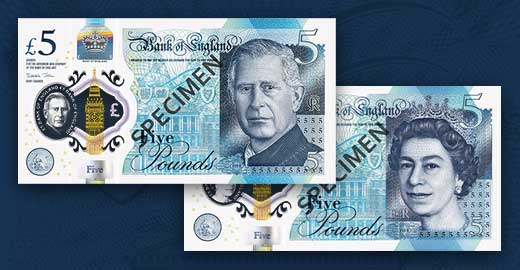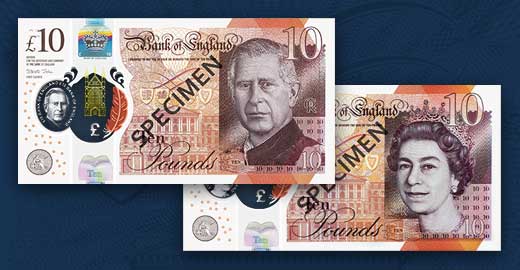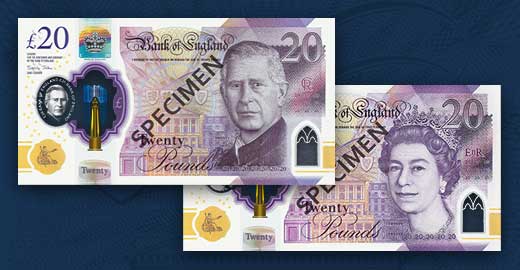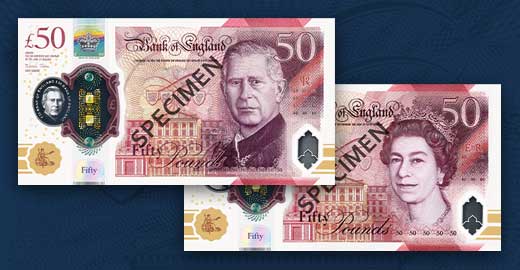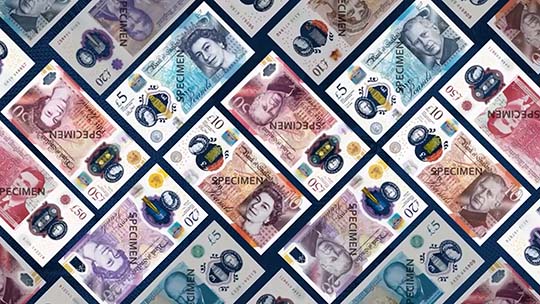The Bank of England banknotes.
There are two versions of the banknotes in circulation. One version featuring a portrait of King Charles III and one version featuring a portrait of Her late Majesty, Queen Elizabeth II.
There are four denominations of the banknotes in circulation: £5, £10, £20 and £50.
All four denominations of notes are printed on polymer.
The security features are the same on both the King Charles III and Queen Elizabeth II notes.
This film will run through those key security features found on all the notes. You should check these features to ensure notes are genuine.
There is a large see-through window.
A clearly defined portrait of either King Charles III or Queen Elizabeth II is printed on the window with the numerical value of the note and the words ‘Bank of England’ printed twice around the edge.
A metallic image is positioned over the window.
The foil is gold on the front of the £5 and £10 notes; gold and blue on the front of the £20 note; and gold and green on the front of the £50 note. The foil is silver on the back of all notes.
On the £20 and £50 notes there is a second, smaller window in the bottom corner of the note.
Below the main see-through window on the front of all the notes, there is a silver foil patch containing a hologram. When you tilt the note from side to side, the words change between the value of the note and ‘Pounds’.
A 3D image of the coronation crown appears above the main see-through window.
On the back of the notes, directly behind the silver crown on the front, there is a metallic, foil patch.
The foil is green on the £5 note, copper on the £10 note, purple on the £20 note and red on the £50 note.
On the front of the notes, you can feel raised print. For example, on the words ‘Bank of England’ and in the bottom right corner.
Under a good quality ultra-violet light, the numerical value appears in bright red and green on the front of the notes, against a duller background.
The Bank of England banknotes.

